The Toshiba OCZ RD400 (256GB, 512GB, 1TB) M.2 PCIe SSD Review
by Billy Tallis on May 25, 2016 8:02 AM ESTAnandTech Storage Bench - The Destroyer
The Destroyer is an extremely long test replicating the access patterns of very IO-intensive desktop usage. A detailed breakdown can be found in this article. Like real-world usage and unlike our Iometer tests, the drives do get the occasional break that allows for some background garbage collection and flushing caches, but those idle times are limited to 25ms so that it doesn't take all week to run the test.
We quantify performance on this test by reporting the drive's average data throughput, a few data points about its latency, and the total energy used by the drive over the course of the test.
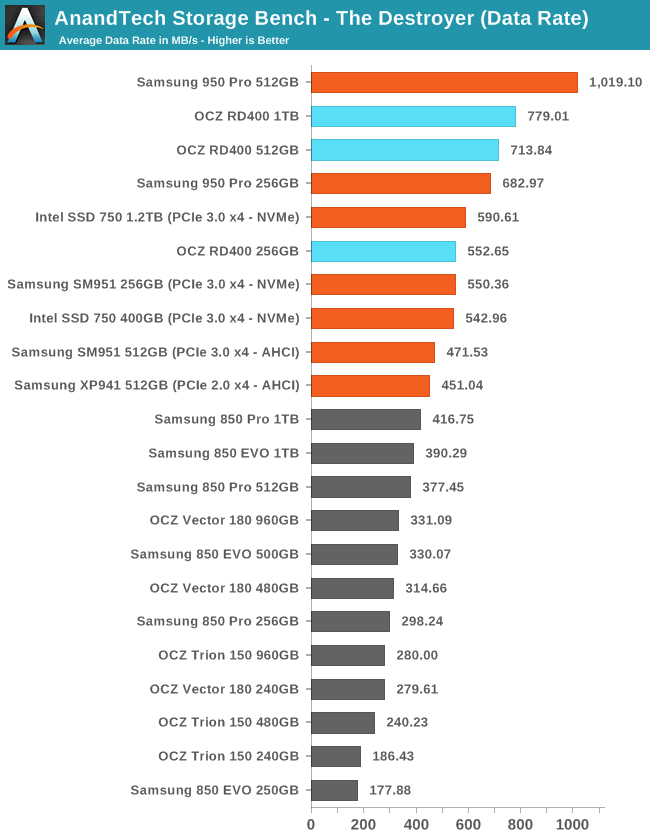
The OCZ RD400 can't keep pace with the Samsung 950 Pro on The Destroyer, but otherwise it beats or ties the other PCIe drives and is substantially faster than any SATA drive.
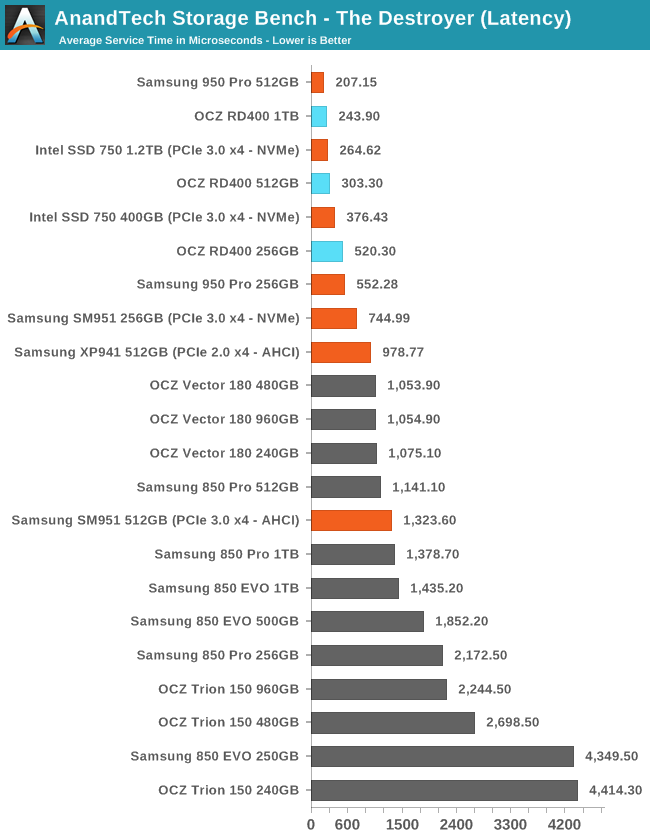
All three RD400 capacities deliver an average service time that falls between the scores of the two 950 Pro capacities. Even the 256GB RD400 almost halves the latency of the best SATA drives.
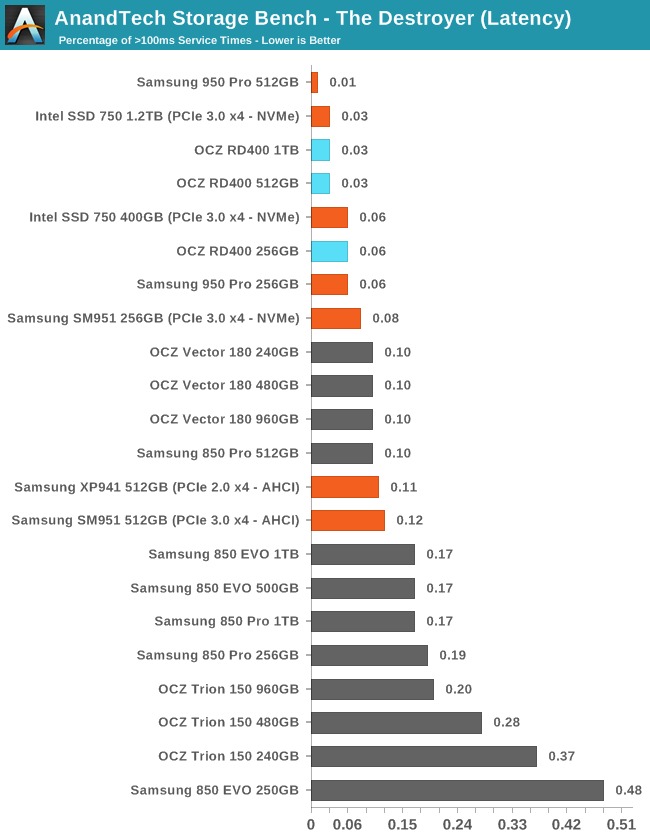
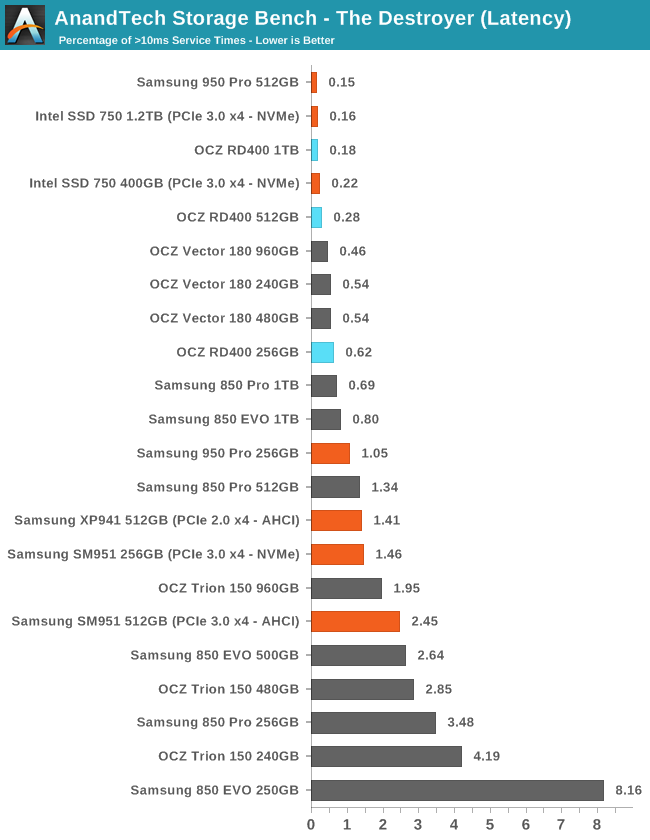
The NVMe drives top the charts for having an extremely low number of severe latency outliers in excess of 100ms, but the 512GB 950 Pro is still clearly the best performer. The NVMe drives are not all clear winners when looking at the number of latency outliers in excess of 10ms: the 256GB RD400 falls behind the Vector 180 and the 256GB 950 Pro is even further behind.
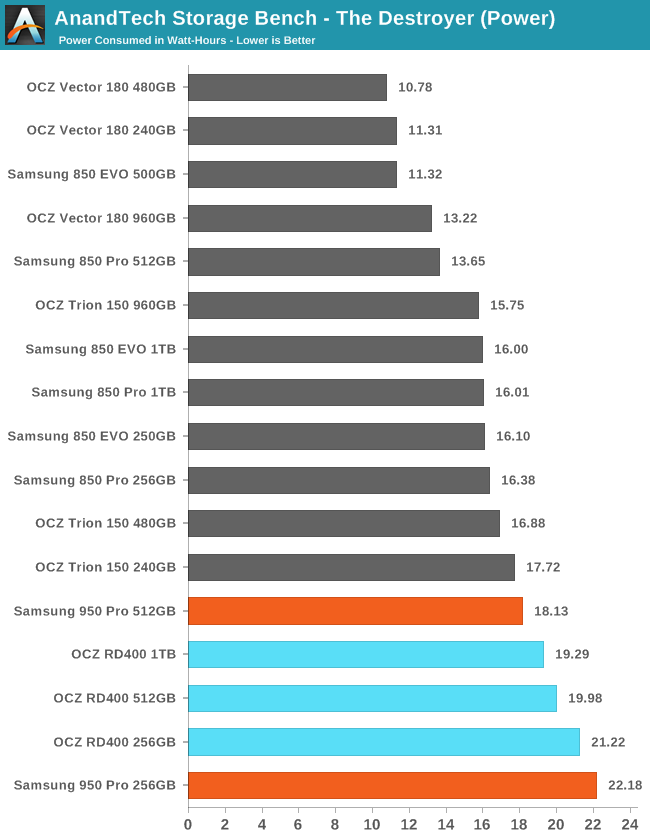
High performance usually carries some cost of high power consumption. The PCIe drives complete The Destroyer far quicker than any of the SATA drives but use more energy overall, and the RD400 falls in between the two capacities of the Samsung 950 Pro.










40 Comments
View All Comments
AnnonymousCoward - Wednesday, May 25, 2016 - link
What about boot time. Is it slow like the Intel card?mervincm - Wednesday, May 25, 2016 - link
Intel 750 SSD isn't slow at boot anymore. Later SSD firmware and NVME drivers have really helped my boot performance.Yregister - Thursday, November 3, 2016 - link
But that's on Windows, correct? I read that the 750 doesn't work on a Mac, not bootable...moheban79 - Saturday, November 12, 2016 - link
Thats not true. I got my Intel 750 booting up my hackintosh. Should be doable.adamto - Wednesday, May 25, 2016 - link
Why there is no 2T or even 4T M.2 SSD?Silma - Wednesday, May 25, 2016 - link
Because there isn't enough place on the stick. One would need to develop much denser NAND.Billy Tallis - Wednesday, May 25, 2016 - link
A double-sided M.2 2280 can usually fit four packages of flash, each containing a stack of up to 16 dies that are typically 128Gb (16GB). That multiplies out to a practical limit of 1024GB for now. Newer 3D NAND such as Micron's will be available in 256Gb MLC dies, enabling 2TB M.2 2280 drives (or 3TB with TLC).Dr.Neale - Wednesday, May 25, 2016 - link
Don't you mean 4 TB with TLC?Billy Tallis - Wednesday, May 25, 2016 - link
We're not quite there yet. Micron's 3D TLC is 384Gb and everybody else seems to be going for a 256Gb TLC that will be a smaller die than their 256Gb MLC. A 4TB M.2 would require either a 512Gb die or denser packaging.Chaser - Wednesday, May 25, 2016 - link
"Upgrading from a mechanical hard drive to a SSD alleviates a major performance bottleneck but the experience of moving from SATA SSDs to PCIe SSDs is not as revolutionary. I suspect most consumers would be better served with a larger SSD of moderate performance than a cramped but blazing fast PCIe drive," Thank you!